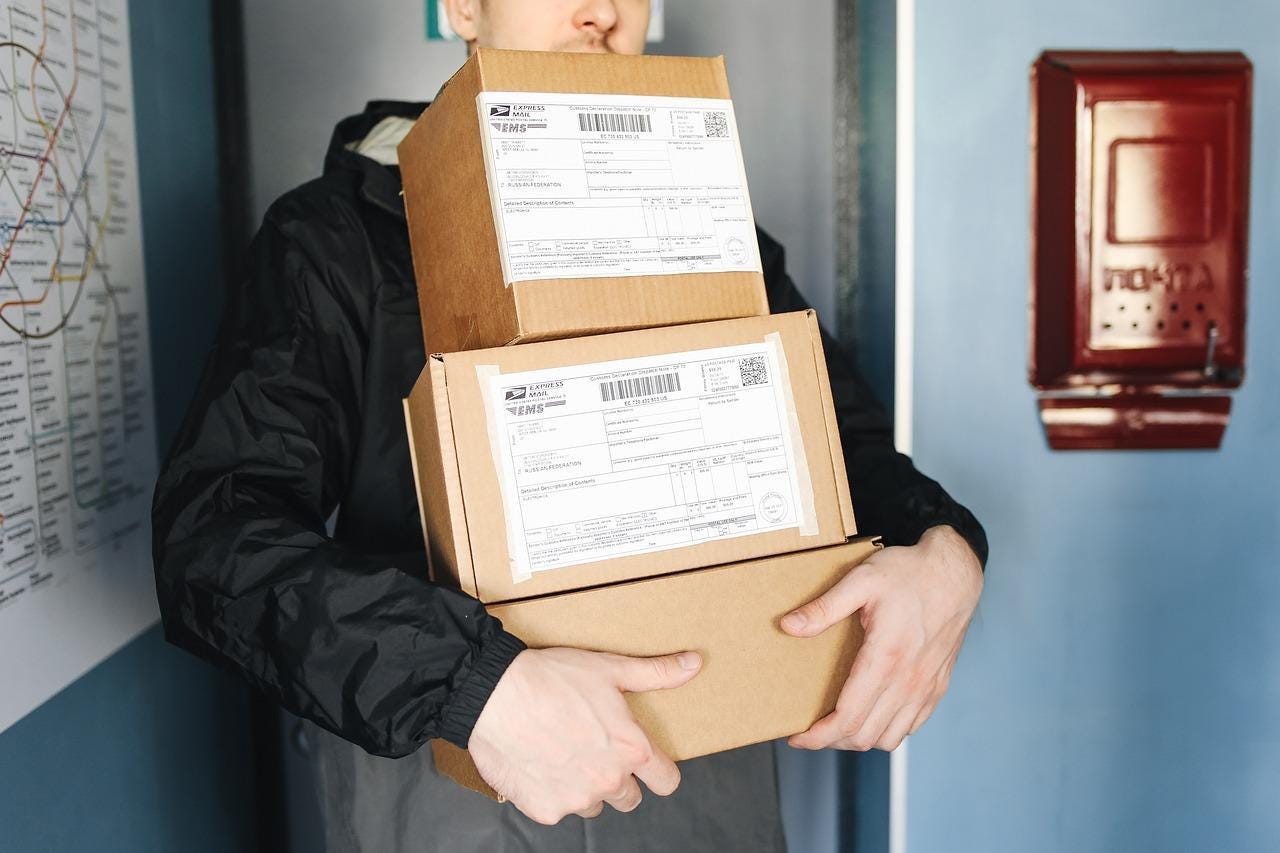- Published on
The Impact of E-Commerce Expansion on Last-Mile Logistics
- Authors
- Name
Over 33% of the world's population uses e-commerce platforms to buy what they need, from cars to groceries. This growth happened gradually until a couple of years ago and simply exploded in recent times, turning today's e-commerce into a $6 trillion industry.
This rapid expansion had a deep impact on the delivery industry, especially last-mile logistics. With giants like Amazon and eBay raising customer expectations for faster deliveries, last-mile businesses had to rethink their strategies.
To succeed, it wasn't enough to add more vans or hire more drivers; businesses had to undergo a full-scale transformation in operations. In this article, we will dive into how last-mile companies adapted to the new demands and the innovative tools that help them stay ahead.
How E-commerce Impacted Last-Mile Business Operations
Last-mile businesses adapted to e-commerce growth by leveraging technology and optimizing logistics.
They adopted advanced delivery management systems to streamline routes, enhancing efficiency and reducing delivery times. Many invested in AI-driven platforms for real-time tracking and better inventory management. Also, nowadays, there is a variety of delivery driver apps for efficiency that look for the shortest and fastest route without wasting any resources.
Businesses also expanded their workforce with flexible gig economy models, using part-time drivers during peak periods. Urban warehouses closer to consumers shortened the last mile itself.
Collaborations with tech firms brought innovation, integrating everything from mobile apps to automated dispatch solutions into daily operations, resulting in quicker deliveries and satisfied customers.
Robotics and Automation in Last-Mile Delivery
It sounds a bit futuristic to say we'll have robots involved in the delivery process, but things are happening right now.
For instance, companies like Starship Technologies already use autonomous robots on college campuses, delivering food and packages directly to students' doors. These small robots navigate sidewalks, using sensors to avoid obstacles.
Companies also employ robotic arms that quickly sort parcels, increasing throughput without additional labor costs. Walmart utilizes Alphabot technology in select fulfillment centers for quicker order processing. At the same time, Amazon's newer facilities use robotic arms to lift and sort packages efficiently before dispatching them for delivery.
In the near future, we may see drones being used for residential deliveries. For now, there are a few concepts, but nothing stands out. Zipline made the first move by pioneering medical supply drone deliveries in Rwanda and Ghana, and it is showing promise for broader applications soon.
Real-Time Data: The Backbone of Modern Logistics
The most notable change businesses of all sizes had to make is related to data collection, processing, and usage.
For instance, FedEx and UPS use live tracking to monitor every package's journey and give customers precise delivery times. This transparency boosts customer satisfaction and trust and makes them expect the same from other delivery companies.
IoT devices play a crucial role in gathering all the necessary data. Smart sensors monitor vehicle conditions and weather patterns, enabling fleet managers to adapt routes instantly if necessary. This results in fewer delays, improved safety, and lower costs.
Moreover, AI algorithms analyze the massive influx of information in real-time to optimize warehousing operations or automate repetitive tasks like sorting parcels according to priority levels based on current demands.
Customer Experience Redefined: Speed vs Quality
Today's customers want speedy delivery that fits into their schedules. In fact, over 25% of buyers would abandon their shopping carts if same-day shipping isn't available. This is why same-day delivery is a huge competitive advantage for online retailers. However, this only increases the pressure for last-mile logistics.
However, over-prioritizing speed might lead to errors or damaged goods if not managed carefully; conversely, focusing solely on quality could result in delays, frustrating consumers accustomed to fast service norms today.
To keep things balanced, many last-mile delivery companies use advanced tracking technology that gives customers real-time updates about their packages' whereabouts, boosting transparency and satisfaction.
AI technology can also help improve customer service by personalizing experiences based on data analysis. For example, AI-driven chatbots handle common questions 24/7, offering assistance without human intervention. This boosts response times and frees up resources for more complex issues.
Wrap Up
Navigating today's dynamic marketplace demands innovative strategies and technologies. From robotics to real-time data, companies adapt swiftly to stay competitive.
Understanding these changes and implementing smart solutions will boost success rates in the evolving landscape of last-mile logistics, ultimately leading to satisfied customers and sustainable growth in an ever-changing industry.

